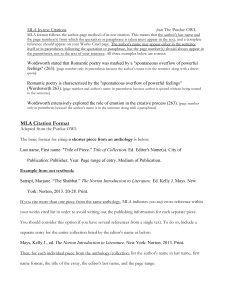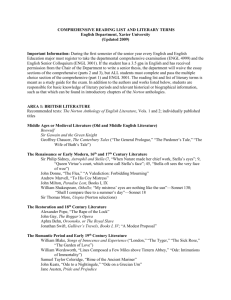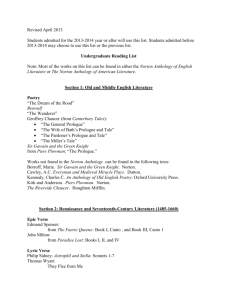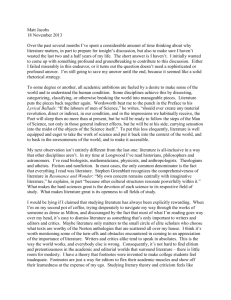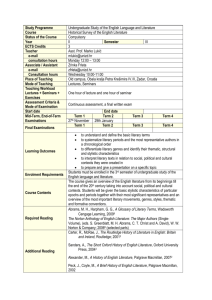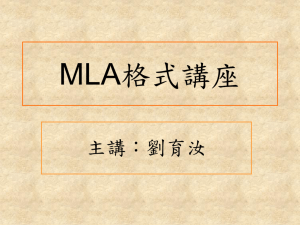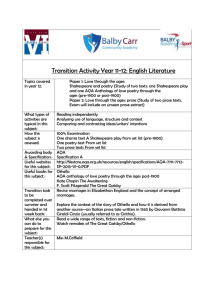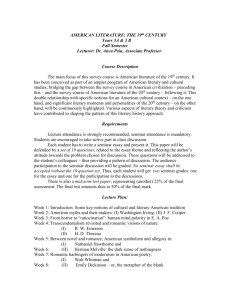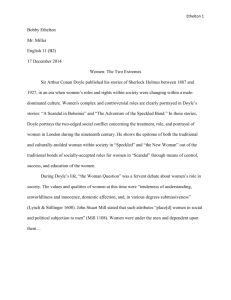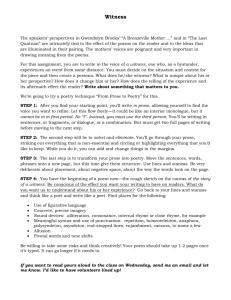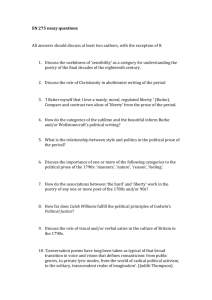BASIC DOCUMENTATION GUIDELINES
advertisement
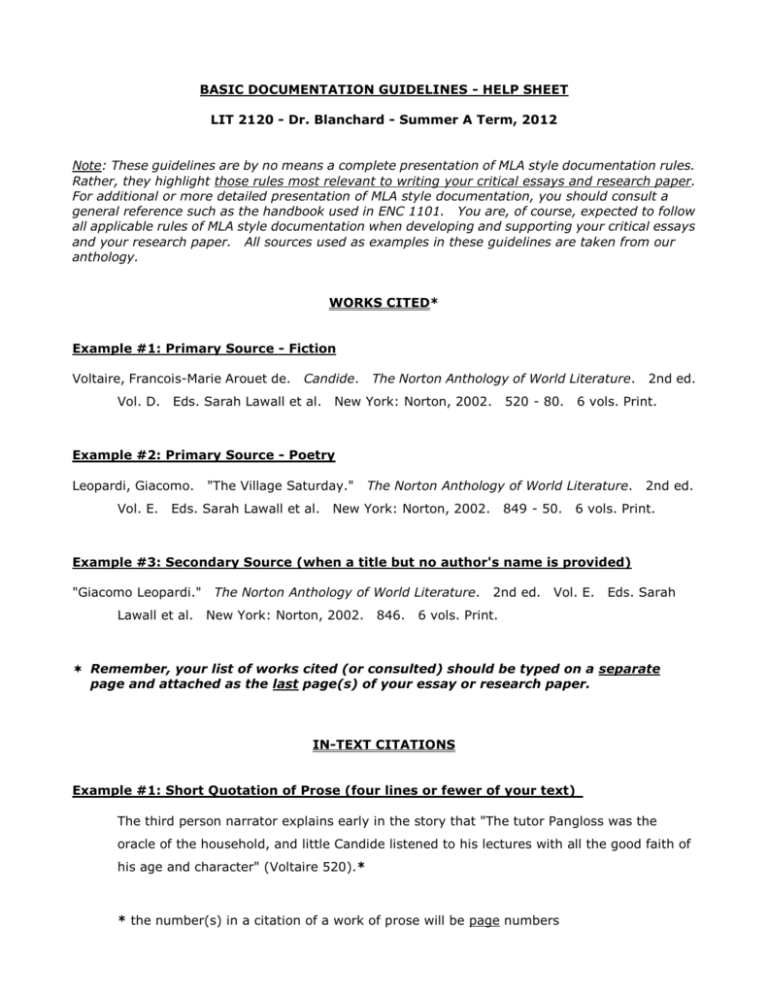
BASIC DOCUMENTATION GUIDELINES - HELP SHEET LIT 2120 - Dr. Blanchard - Summer A Term, 2012 Note: These guidelines are by no means a complete presentation of MLA style documentation rules. Rather, they highlight those rules most relevant to writing your critical essays and research paper. For additional or more detailed presentation of MLA style documentation, you should consult a general reference such as the handbook used in ENC 1101. You are, of course, expected to follow all applicable rules of MLA style documentation when developing and supporting your critical essays and your research paper. All sources used as examples in these guidelines are taken from our anthology. WORKS CITED* Example #1: Primary Source - Fiction Voltaire, Francois-Marie Arouet de. Vol. D. Candide. Eds. Sarah Lawall et al. The Norton Anthology of World Literature. New York: Norton, 2002. 520 - 80. 2nd ed. 6 vols. Print. Example #2: Primary Source - Poetry Leopardi, Giacomo. Vol. E. "The Village Saturday." Eds. Sarah Lawall et al. The Norton Anthology of World Literature. New York: Norton, 2002. 849 - 50. 2nd ed. 6 vols. Print. Example #3: Secondary Source (when a title but no author's name is provided) "Giacomo Leopardi." Lawall et al. The Norton Anthology of World Literature. New York: Norton, 2002. 846. 2nd ed. Vol. E. Eds. Sarah 6 vols. Print. Remember, your list of works cited (or consulted) should be typed on a separate page and attached as the last page(s) of your essay or research paper. IN-TEXT CITATIONS Example #1: Short Quotation of Prose (four lines or fewer of your text) The third person narrator explains early in the story that "The tutor Pangloss was the oracle of the household, and little Candide listened to his lectures with all the good faith of his age and character" (Voltaire 520).* * the number(s) in a citation of a work of prose will be page numbers LIT 2120 - Documentation Guidelines (2) Example #2: Long Quotation of Prose (more than four lines of your text) It is clear early in the narrative that Voltaire does not want us to view Pangloss as the wise man the naive young Candide believes him to be. The satirical tone seems evident, for example, in the following description of Candide's tutor: -- It is clear, said he, that things cannot be otherwise than they are, for since everything is made to serve an end, everything necessarily serves the best end. Observe: noses were made to support spectacles, hence we have spectacles. Legs, as anyone can plainly see, were made to be breeched, and so we have breeches. Stones were made to be shaped and to build castles with; thus My Lord has a fine castle . . . (521) Example #3: Short Quotation of Poetry (three lines or fewer) Leopardi's narrator vividly contrasts Saturday with the other days of the week, saying "The passing hours will bring tomorrow soon / And tedium and sadness" (38 - 39).* * the number(s) in a citation of a work of poetry will be line numbers Example #4: Long Quotation of Poetry (more than three lines) In the fourth stanza of the poem, the narrator makes explicit why Saturday contrasts so dramatically with the six other days of the week: Of all the seven days this is the one Most cherished, full of joy and expectation. The passing hours will bring tomorrow soon, And tedium and sadness, When each shall turn inside His mind to his habitual travail. (Leopardi 36 - 41) You should understand the meaning of the following terms relating to MLA style documentation : "primary source," "secondary source," "in-text citation," "list entry,” "list of sources," "prose," and "poetry." You should also have an understanding of when an in-text citation should include a) only a page or line number, b) both a number and an author's name, or c) a number, an author's name, and an abbreviated title.
